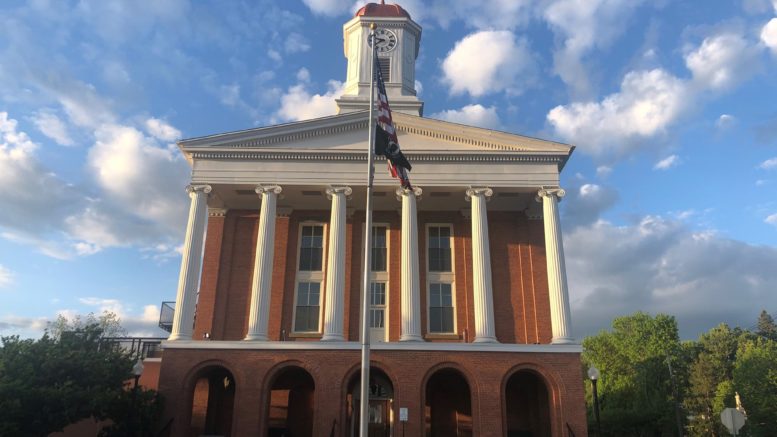Solar energy companies are taking a look at Susquehanna County where there may be open land that could potentially be used for a community solar project.
Matt Tripoli, director of project development for CS Energy, of N.J., provided information on the possibility of local solar energy development during the Susquehanna County Economic Development Advisory Board meeting, held virtually on Thursday, Jan. 28.
Tripoli is familiar with the county, and previously worked on the IMG natural gas power plants in the area before moving to CS Energy.
In the past two decades, natural gas has taken on an increasingly important role in electricity generation, Tripoli said, and now supplies about one-third of electric generation.
Over that time period, there’s also been a growth in renewable energy resources, Tripoli told the board. He explained that the cost of solar power installation is “dropping pretty dramatically,” and admitted that while solar power is competitive, it is probably not as cheap as natural gas.
He also told the board that many states have taken action to change the overall makeup of electricity generation. In 2004, the Pennsylvania passed a bill to increase use of renewables to about eight percent by 2021. Tripoli said that mark has basically been met, but companies are anticipating that Pennsylvania will be taking a look at the efforts of neighboring states to further increase the use of renewable energy sources for electric generation.
Tripoli told the board he believes the community solar projects present the best opportunities in Susquehanna County. However, he said, Pennsylvania currently does not have supporting legislation allowing for such projects. House Bill 531 and its counterpart in the PA Senate, SB 705 were introduced in the 2019-2020 legislative session. The Pennsylvania Farm Bureau was supportive of the legislation, but it was not voted out of committee.
Tripoli said, “If this does get traction with the state legislature, there would be a lengthy rule-making process with the PUC that followed. It might be awhile before you see (solar projects) breaking ground.”
The solar panel arrays for a community solar project would require 20-40 acres of southern facing, mostly flat land, he said. Areas ripe for projects would be situated near the existing power lines that run through the county (see graphic).
Tripoli said companies commonly enter into an option agreement for use of the land, and then – as a project is developed – enter into a lease agreement for use of the land.
Tripoli admitted that while there is construction jobs associated with putting in the community solar farms, the drawback is that they don’t support a lot of longterm employment.
Commissioner Judy Herschel said that some people say there isn’t enough sunlight in the area to support solar power, and asked Tripoli for his assessment of that claim.
Tripoli answered, “The most important thing to think about is that most of the electricity we use, we use during the day. The good thing about solar is that it produces when we use it the most.”
In New York, the state is offering incentives driving renewable energy developers to brownfield, landfill and other underutilized sites so they can be put back into use. In 2020, the New York Public Service Commission extended the NY-Sun Program through 2025. NY-Sun is a public-private partnership aimed to grow the solar industry in New York. As part of its program, there is training and assistance provided to help local governments “identify opportunities, mitigate barriers, and create solar programs,” according to the nyserda.ny.gov.
Broadband project update
The dark fiber engineering study and design has been completed, reported Progress Authority representatives.
The Progress Authority administers day-to-day economic development activities for the county.
The study has been given to the county commissioners, reported Progress Authority Director Anthony Ventello.
If the county moves forward with the plan presented, the next step would be to identify the total costs, as well as potential funding sources for the project.
There is a potential for federal Appalachian Regional Commission (ARC) grant funding, as access to broadband has become a priority issue, especially in the past year. Pennsylvania’s Dept. of Community and Economic Development (DCED) could also take a look at the application to see if there are areas where they could also advance some funding for the project.
The Susquehanna County Economic Development Advisory Board meets on the fourth Thursday of each month, at 10 a.m., with meetings typically held in the lower level conference room of the county office building.




Be the first to comment on "Susquehanna County Economic Development Board explores solar possibilities"